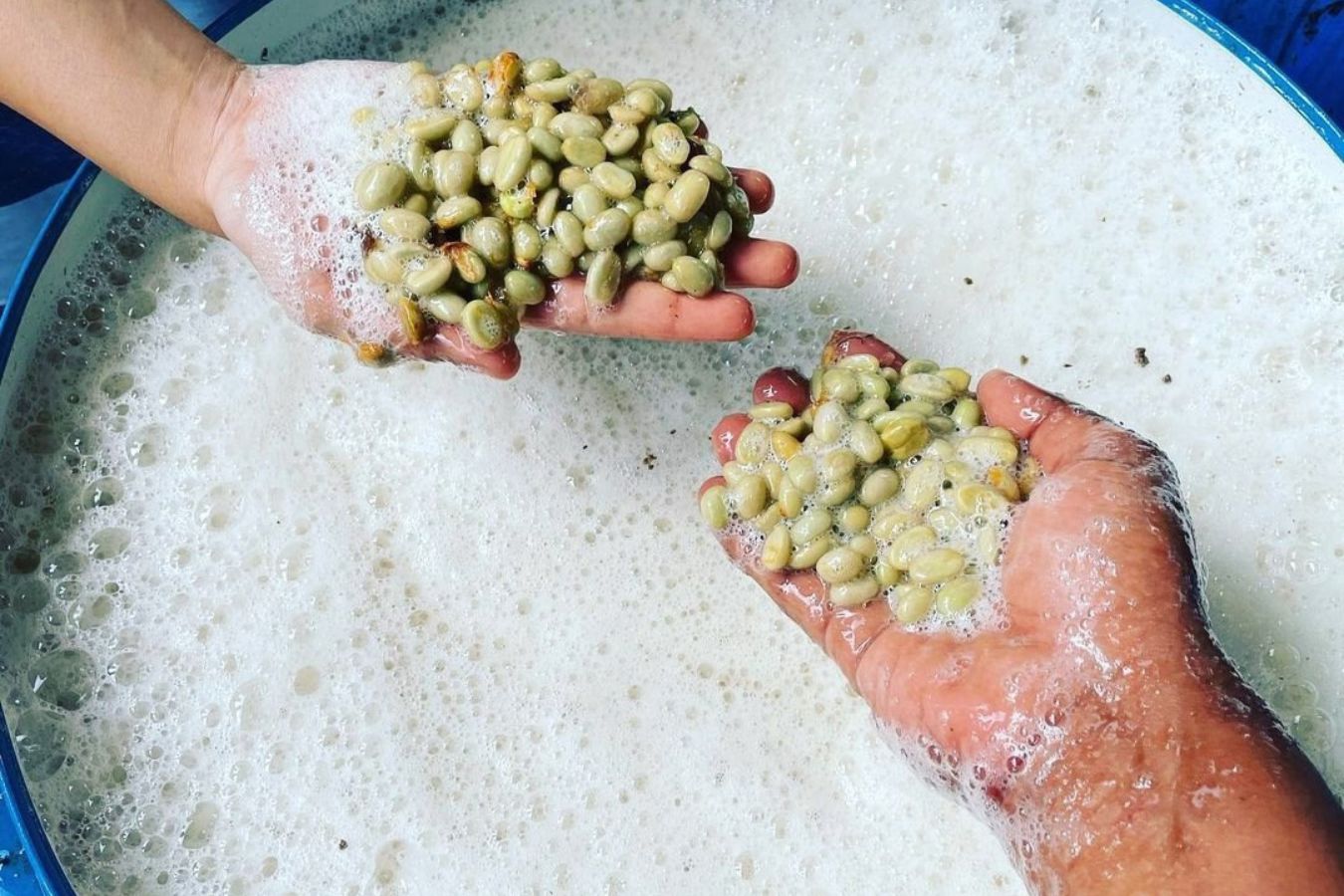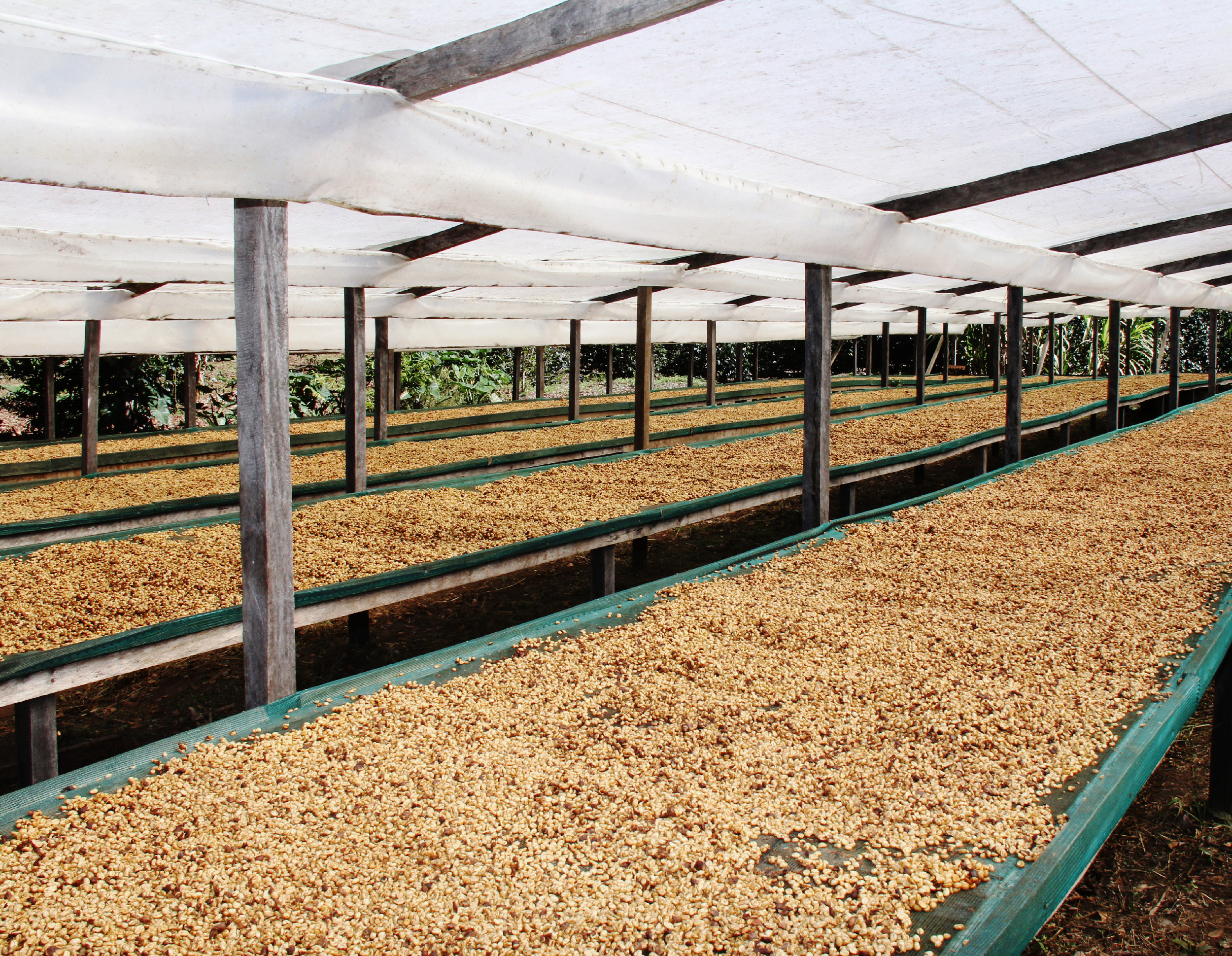
- July 27, 2022
- 0
- 2964

We have all seen the terms “ anaerobic fermentation ”, “extended”, cold fermentation or, more rarely, “ carbonic maceration ”. carbon dioxide), or deconstructed fermentation (isolated fermentation), is used to describe the controlled fermentation method advocated by forward-thinking manufacturers. Given their testing frequency, it looks like these methods are becoming mainstream!
However, not everything new is an achievement; we often remind each other that “the wheel should not be reinvented”, so to understand what is happening with coffee fermentation, we will explore the little-known benefits of the new procedures and why they don’t go “normally” but take longer than 36 hours.
Purpose of fermentation in coffee processing
Before we take a closer look at some of the different “fashion fermentations” being experimented with, we must learn a little more about fermentation and how it’s done. traditionally used in the coffee world.
On a practical level, fermentation is officially introduced into coffee processing ( wet processing ) because it is the cheapest way to remove mucilage from coffee beans (with the main ingredient being pectin ).
Removing pectin mechanically or by adding enzymes is possible, but this requires investment and rigorous control. After the cherries have been peeled, they are left in a barrel/tank to ferment, sometimes with water, until the mucilage surrounding the beans is “loose enough” to dissolve quickly.
Although fermentation only involves the berries, it can still affect the beans. For example, if fermentation takes too long, this can lead to over-fermentation or an undesirable “winey” flavour.


“Wild” yeasts and bacteria are present in the environment – on coffee pods, containers, water, and virtually any surface where coffee is processed, breaking down sugars and mucous membranes. rich in pectin, thus “cleansing” the grain and preparing it for drying.
This process occurs without human intervention. Usually, fermentation takes as little as 6 hours – some as long as 72 hours. The time frame highly depends on the ambient temperature, the pulp/muscle layer thickness, etc.
Different processing styles ( wet processing, honey ) used fermentation in different ways to achieve the result (removing the cherries from the beans) depending on the conditions. environment, resources or market demand.
And for hundreds of years, the concept of “fermentation” often did not imply much meaning; this was just a step in the preliminary processing of coffee!
Prolonged fermentation
During fermentation, microorganisms produce metabolites from the plant nutrient source and accumulate in the processing environment – known as microbial fermentation.
In wet processing, the fermentation of the coffee occurs in the soaking tank, while with dry processing, fermentation takes place in the outer layers of the cherries.
Almost every coffee reference book tells you that fermentation risks spoiling a batch of coffee. Most scientific research on fermentation in coffee has focused on removing mucilage as quickly as possible ( Lee et al., 2015 ).
The rapid fermentation – in about 8 hours, is considered optimal, as the risks of microbial damage and the coffee bean are minimized. Furthermore, it is much cheaper and requires less detailed follow-up planning throughout the process.

However, fermentation is not a process in which the flavours of foreign ingredients move to the beans. It is a metabolic process in which microorganisms such as yeast and bacteria break down organic matter to produce energy.
The flavour molecules we expect in (well-fermented) coffee are the rest of this process. These molecules move from the fermentation solution to the coffee bean and improve (or not) its final flavour.
Since all post-harvest processing methods involve fermentation (including dry processing), every coffee on Earth is “improved” by such molecules.
Added sugar or fruit?
As such, coffee that’s been ” improved ” or ” extended “, depending on what you like to call this style) is completely “natural”.
Though. we should probably avoid using the word “natural” – it implies that adding substrates (fruits, sugars or spices) to the fermentation process may be unnatural in some respects. there.
So the problem is? The problem lies in the concept of “additional”, where extra ingredients (cinnamon, orange, apple etc.) are added to the fermenter to impart naturally absent coffee flavours.
The concern is how “novel coffees” can be called Specialty Coffee– an industry where the natural elements of coffee have long been emphasized.
Despite the controversy, this nascent industry is putting everything in the same yeast vat and experimenting with inconsistency.

So what happens when you put the fruit in a fermentation tank/bag? Fruit will not make coffee taste/smell like canned fish.
Scientifically: It will help control fermentation by providing sugar for existing microorganisms. It also enriches the microflora of the solution or changes its pH and thus regulates the type of microorganisms that will be active during the fermentation process.
The change in flavour we perceive in a cup of coffee is always an indirect consequence of metabolism.
On the other hand, we found a good argument for adding fruit, sugar or other exotic ingredients to your coffee during your fermentation:
If you’re forced to do a lengthy fermentation because you don’t have the manpower to wash the coffee at the right time, or the weather doesn’t allow it, feeding the microbiome something else can help. You can trade that time so that they do not degrade the coffee and affect the quality of the beans. Not because it’s “sexy” or “fashionable”. This is where the over-fermentation takes place, and the “glorious affair with fruits” can come in handy as it can be a good way to preserve coffee. It’s just a tool that manufacturers can use if something goes wrong.”
Lucia Solis, consultant, training in coffee fermentation at Luxia Coffee Solutions, Colombia.
However, relying on time alone to determine the progress of the fermentation does not necessarily yield the best results if other variables are not considered.
For example, coffee that is fermented for 18 hours in Tarrazú, Costa Rica, in hot and sunny weather, will have a much higher rate and stage of metabolism than coffee that is fermented for 18 hours in the highlands cooler than that of Huehuetenango, Guatemala (where fermentation can take 36, even 72 hours).
Does this contribute to the difference in taste between the coffees from those two regions? Perhaps, but we also have to consider the differences in the microbial population there, as well as the material of the fermenter, the coffee variety, etc. Based on time alone – such as 18 hours of “spent” standard”, can be helpful as a guideline but is not a rule.
Other insights into fermentation
There are many and/or joint misconceptions in the coffee industry regarding production and processing at the source. Industry insiders often use jargon to guide consumers, but signs of quality such as altitude, seed source, and processing method.. only tell a small part of a coffee’s story. get high.
Like in many places, people often associate the quality of a coffee with the altitude of its cultivation without considering factors such as climate, seed source, soil, farming practices, etc.
This is similar to expecting too much of the fermentation time and forgetting about the nature of the process, issues such as microbial species, sugar content, ambient temperature, or coffee variety. star?

As for fermentation, the disturbing fact is that the coffee industry too often applies technical lexicons to marketing without a solid background in the science behind them.
Similarly, manufacturers use different tools and methods to monitor their fermentation, including refractometers (Brixometers) and Chaptalization – a standard process.
A variation in winemaking involves adding sugar to the grapes to continue fermentation. This does not result in sweeter wine but more “alcohol” because fermentation breaks down the sugars and ultimately leads to less sweetness. This is how wine is made, and no one questions its “orthodoxy”.
A longer time doesn’t mean more flavour
Fermentation is a particular stage in the coffee processing chain, which is very clear regarding technology and depends on science.
Under typical tropical conditions with a temperature of 25°C, 24 hours is sufficient for the molecules produced by fermentation to enter the coffee beans (SCA, 25 Magazine, 2019).
Different yeasts may need more or less time to “warm up”, so fermentation can take up to 36 hours. However, more is not necessarily better. And the danger is that microorganisms will sometimes consume all their “food” and be forced to find something else.
Importantly, and above all, no processing technique can compensate for a poor quality coffee. You have to choose between wine and coffee – a good coffee should be within its concept, rather than measured by the qualities of the wine.
Going back a bit to degrees Brix (°Bx), which measures the solubility of sugars, specifically sucrose, in solution.
Today, coffee manufacturers often use refractometers to see the total soluble sugar content of the coffee berry as it ripens on the plant and then fermented (the sugar content decreases as the coffee beans mature). organisms that metabolize it).
In wine, the Brix is used to determine the progress of fermentation and prevent sour fermentation, but it is important to note that in wine, the “grape juice” is the final product. while for coffee, we only use beans, not coffee fermentation water.
Furthermore, sugars other than sucrose are present in the coffee fruit, not to mention other compounds such as acids, amino acids, polyphenols, caffeine, etc.
Therefore, a one-time Brix reading to determine the maturity of fermentation does not necessarily yield the best results: Effectiveness lies in comparison, contrast, context, continuous and consistent record keeping and critical thinking ( you have to understand what makes that parameter clearly).
Reduce sugar content but increase the perception of sweetness
Respiration is the process organisms use to harness the energy stored in organic compounds such as sugars. Only when oxygen is not available, do many organisms turn to fermentation instead.
But because fermentation can’t use the high-energy bonds in oxygen, each sugar molecule provides less energy than respiration. Furthermore, during respiration, the waste products are carbon dioxide and water.
During fermentation, different organisms produce different waste products – the most common being lactic acid and ethanol.

Strictly speaking, no producer can add sweetness to their coffees by fermenting them. Fermentation is the breakdown of sugar – You lose it all the time.
But the sweetness in coffee that many experts point to doesn’t come from chemicals but our brains — we perceive the sweetness even when it’s not there. It is a paradox, but the scientific basis of fermentation.
Fermentation, especially with yeast, is good at (replicating) that. It produces aromatic compounds that cause a multi-modal experience) to put it simply, we usually describe a scent as sweet, but “sweet taste” is a “flavour” that both taste and smell have evolved to associate with sugary foods.
Fermentation also produces fruit- or honey-like compounds for “your brain to fill in the void.”
So while this will likely be controversial because of long-held opinions, like all things coffee, sometimes coffee just needs to satisfy one’s palate. you – it doesn’t matter to explain why.
Microbial supplement
There are several crossroads between modern coffee fermentation techniques and wine production, among which another trend in coffee processing is the use of specific yeast strains to control fermentation.
The selection of microbial populations for coffee fermentation is no longer a conversation about minimizing risk or minimizing defects – it satisfies these concerns. It can shift the focus to increase value and quality.
Other industries such as wine, beer, cheese, and yoghurt have been choosing microorganisms to add complexity to raw materials and maintain or enhance quality while minimizing risk.
The active selection of bacteria allows coffee producers to use the same tools available to other industries for decades.


Using one fungus to suppress the growth of another is a popular strategy in the world of microbiology and is widely used in the wine industry (Suzzi et al. 1995).
Fungi compete for space and nutrients; some even secrete chemicals that prevent other fungi from growing. Almost all strains of saccharomyces yeast (also called brewer’s or baker’s yeast) are bioprotectors against spoilage microorganisms such as moulds.
Even common baker’s yeast you can buy at the grocery store works. However, the article will not have an end (and it is still very early to advocate for yeast supplementation) if we continue to explore this aspect, which we will delve into in a later section.
While science and our understanding of post-harvest processing continue to evolve, the risk aversion to new issues often contrasts with market shifts as consumer demand increases for coffees of unique origin and/or higher quality.
Many manufacturers in the supply chain will be left behind if technical advances are not seriously reviewed and updated. You cannot keep up with today’s market with the techniques of the last century.
This is, therefore, a matter of consideration and should be experimented with science – rather than speculation and emotional discussion.
Conclusion about Coffee Fermentation Processing
In summary, fermentation affects flavour is a widely accepted concept, but exactly how this happens is still unclear.
While over-fermenting is a surefire way to spoil a coffee, prolonged fermentation is considered risky and challenging to replicate consistently; other variations of this process are often ostentatious performance rather than for practical technological purposes.
Why should we spend 72 to 100 hours completing a task that can be completed in 35 hours?
Although extended fermentation experiments have been successful in some places, it remains to be seen whether the same process can be repeated in other regions where the native microbiota and conditions are not the same. Conditions during fermentation can be very different.
The above are the views we have compiled to share with you about the nature, challenges and potential of controlled fermentation. If it is not for economic purposes, but the subject is the link in the industry, the theory will become dogma, and the practice without a scientific basis will be like a ticking time bomb.
Producers pushing boundaries regarding popular concepts of fermentation techniques want to experiment, make changes and apply new technologies in the process.
Sometimes the results are promising, sometimes downright lousy. Still, all can bring us closer to a real understanding of how fermentation can limit or expand the possibilities for a coffee-filled future. more delicious, exciting and sustainable coffee, let’s look forward to it
Reference source :
- www.algrano.com/ Coffee fermentation adulteration Lucia Solis
- www.plotroasting.com/ Experimental fermentation in coffee processing
- www.cafeimports.com/ Understanding Fermentation and Coffee
- www.baristahustle.com/ Long Fermentation Q and A with Lucia Solis
- www.baristahustle.com/ I Would Ferment Five Hundred Hours
- www.baristahustle.com/ Starter Culture Culture